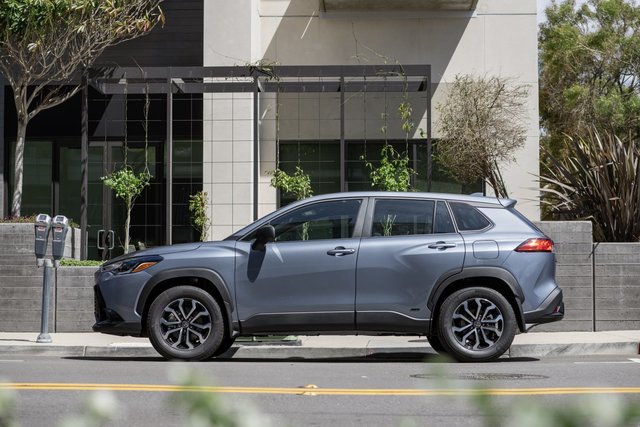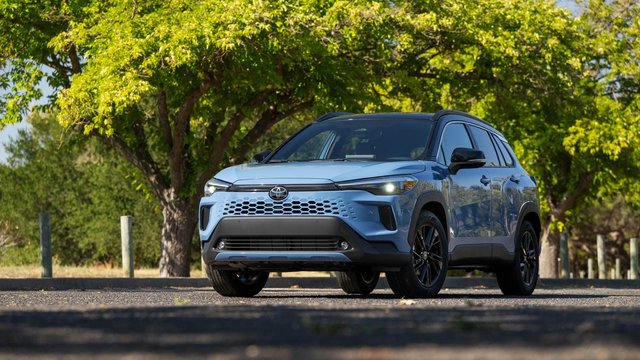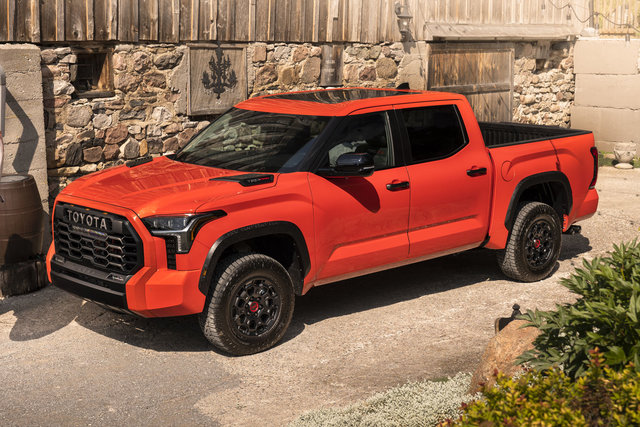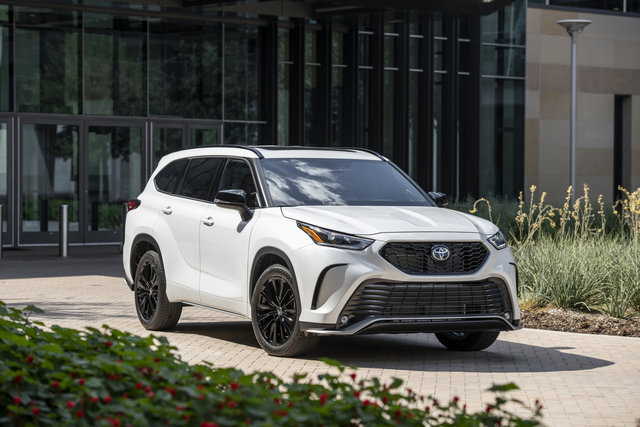If you're shopping for an affordable AWD compact SUV in Belleville, you've likely noticed RAV4...

Toyota's expansion into electrified powertrains brings three distinct hybrid technologies to Canadian showrooms in 2025. Each system serves different driving needs, from urban commuting to heavy-duty work applications. Understanding these differences helps buyers choose the hybrid technology that best matches their lifestyle and driving patterns.
The confusion surrounding hybrid terminology often prevents buyers from making informed decisions. This guide breaks down the essential differences between Hybrid Electric Vehicle (HEV), Plug-in Hybrid Electric Vehicle (PHEV), and i-FORCE MAX systems, using specific Toyota models to illustrate how each technology works in real-world situations.
Traditional Hybrid (HEV): The Self-Charging Solution
Hybrid Electric Vehicle technology represents Toyota's most widespread electrification approach. These systems charge their batteries exclusively through regenerative braking and engine operation - no plugging in required. The 2025 Camry exemplifies this technology with its 2.5L four-cylinder engine paired with an electric motor and battery pack.
HEV systems automatically switch between gas and electric power based on driving conditions. During city driving, the electric motor handles low-speed acceleration and stop-and-go traffic. Highway cruising primarily uses the gasoline engine, while demanding situations like merging or climbing hills combine both power sources for maximum output.
The Camry Hybrid delivers 232 total system horsepower while achieving excellent fuel economy. The system requires no charging infrastructure or changes to driving habits - simply fill the gas tank and drive normally.
Key HEV Characteristics:
- Self-charging through regenerative braking
- No external charging required
- Seamless switching between gas and electric power
- Available across multiple Toyota model lines
- Lower purchase price than PHEV alternatives
Plug-in Hybrid (PHEV): Extended Electric Range
Plug-in Hybrid Electric Vehicle technology builds on traditional hybrid systems by adding a larger battery pack and external charging capability. The RAV4 Plug-in Hybrid demonstrates this approach with its ability to operate on electric power alone for extended distances before the gasoline engine engages.
PHEV systems provide the flexibility of pure electric driving for daily commutes while maintaining gasoline backup for longer trips. The RAV4 Plug-in Hybrid travels up to 68 kilometres on electric power alone, sufficient for most daily driving needs in urban areas. When the battery depletes, the system operates like a traditional hybrid.
Charging occurs through standard household outlets or public charging stations. A 240V outlet charges the RAV4 Plug-in Hybrid in approximately 2.5 hours, making overnight charging convenient for most owners. The larger battery capacity also enables higher total system power output - the RAV4 Plug-in Hybrid produces 302 system horsepower.
Key PHEV Characteristics:
- External charging capability
- Extended electric-only driving range
- Higher system power output
- Suitable for both urban and long-distance driving
- Requires access to charging infrastructure
i-FORCE MAX: Performance-Focused Hybrid
The i-FORCE MAX system targets applications requiring maximum power and capability. This technology appears in the 2025 Tundra pickup truck and the new 4Runner SUV, where towing capacity and off-road performance take priority over maximum fuel economy.
i-FORCE MAX pairs a turbocharged engine with an electric motor integrated into the transmission. The 4Runner's i-FORCE MAX system produces 326 horsepower and 465 lb-ft of torque - significantly more than traditional hybrid systems. This additional power serves demanding applications like towing heavy trailers or climbing steep off-road grades.
Unlike traditional hybrids that prioritize fuel economy, i-FORCE MAX focuses on power delivery and capability. The electric motor provides immediate torque for responsive acceleration, while the turbocharged engine maintains power at higher RPMs needed for sustained performance.
Key i-FORCE MAX Characteristics:
- Performance and capability focused
- Higher power and torque output
- Integrated electric motor within transmission
- Designed for towing and heavy-duty applications
- Available in truck and SUV applications
Choosing the Right Hybrid Technology
|
System Type |
Best For |
Charging Required |
Example Model |
|---|---|---|---|
|
HEV |
Daily commuting, city driving |
None |
Camry Hybrid |
|
PHEV |
Mixed urban/highway, short commutes |
Yes |
RAV4 Prime |
|
i-FORCE MAX |
Towing, off-roading, performance |
None |
4Runner Hybrid |
The decision between hybrid technologies depends on individual driving patterns and priorities. Urban drivers with short commutes benefit most from PHEV technology's electric-only capability. Those requiring maximum capability choose i-FORCE MAX systems. Traditional HEV systems serve drivers wanting hybrid benefits without changing their refueling routine.
Toyota's commitment to electrification means hybrid options will continue expanding across the model lineup. Each system provides specific advantages while maintaining Toyota's reputation for reliability and durability.
Understanding these fundamental differences allows buyers to select the hybrid technology that best matches their needs rather than choosing based on assumptions or incomplete information.
Visit Belleville Toyota to experience how each hybrid system performs and determine which technology fits your driving requirements.
Other Articles That May Interest You
Towing a boat to Sandbanks Provincial Park or hauling a camper through Picton's winding roads...
Advanced driver assistance systems have moved from luxury-car exclusives to standard equipment on...






